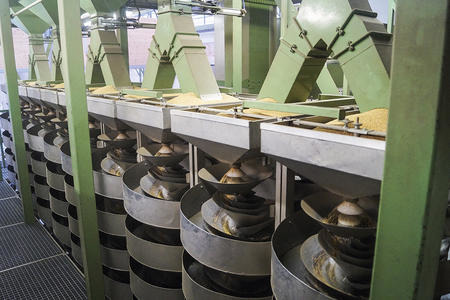International
Use the chances of crop management
No matter whether catch crops are used for erosion protection, nutrient preservation, for fighting nematodes or as efficient weed or weed grass suppression, a soil well penetrated by roots and a completely covered soil surface are essential.
| Summary: A well-established catch crop serves as erosion protection, preserves nutrients, suppresses weeds and weed grasses efficiently and/or fights nematodes. The selection of seeds, sowing date and field preparation are important building blocks for crops which realise these advantages to the full. Seed quality: The passive dispersal of unwanted associated plants with the seeds has disadvantageous effects for the follow-on crop. Therefore it is very important to have high seed purity combined with high germinability. This means only certified seeds should be used. Seeding time: The possible sowing time is essential for selecting the right catch crop. From September onwards, catch crop mixes with a high content of summer legumes do not make sense due to the slow initial development. White mustard (e.g. ACCENT, ALBATROS), oil radish (e.g. COLONEL, SILETINA), or bristle oat (PRATEX) are much more suitable at this time. Crop management: Intensive working of the soil reduces the competition pressure from weeds and volunteer cereals. Seeding with the driller is the most cost intensive option but also promises the best field emergence. A sufficiently dense sowing rate is necessary as is promotion of the initial growth using nitrogen fertilisation. |
Which catch crop is right? The crop rotation predominantly determines the choice of catch crop. Catch crops must not promote plant diseases and pests in the main culture, ideally they even break disease cycles.
Pay attention to seed quality!
The passive dispersal of unwanted associated plants with the seeds has negative effects for the follow-on crop. The seed quality – meaning a good purity combined with high germination ability – is decisive for SUCCESS with catch crops and catch crop mixes. When using certified seeds, these properties are officially checked and ensured. Varieties brought into circulation as commercial seeds (such as ramtilla) only have to meet considerably lower requirements and are therefore not used in viterra® soil fertility and biomass mixes. Numerous cleaning facilities make it possible to reach a purity close to 100 %. Therefore, carry-over of unwanted associated plants with the seeds is reduced to a minimum – from a phyto-hygienic view point this is extremely important!
The seeding time is important
When selecting the catch crop, it is also important to take into account the foreseeable seeding time. From September onwards, catch crop mixes with a high content of summer legumes do not make sense due to the slow initial development. White mustard (e.g. ACCENT, ALBATROS), oil radish (e.g. COLONEL, SILETINA), or bristle oat (PRATEX) are much more suitable then.
Managing the crop correctly
Once chosen, the SUCCESS of the catch crop is mainly due to soil preparation, fertilisation and seeding. Intensive working of the soil reduces the competition pressure of weeds and volunteer cereals. Seeding using a driller is the most cost intensive option but also promises the best field emergence. For greening, only organic fertilisation is permitted. If available, liquid manure or fermentation residues should be applied to the catch crop to promote initial development.
Make use of your possibilities for selecting seeds, the seeding time and procedures in arable farming and profit from the advantages of a well established catch crop.
Daniel Dabbelt
Status: 15.10.15
Picture credits: P. H. Petersen Saatzucht Lundsgaard GmbH


